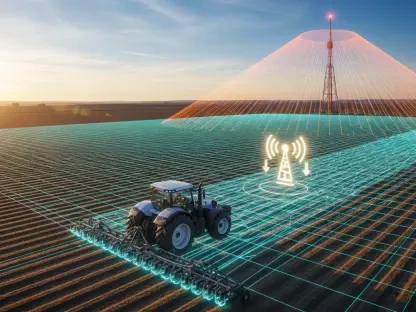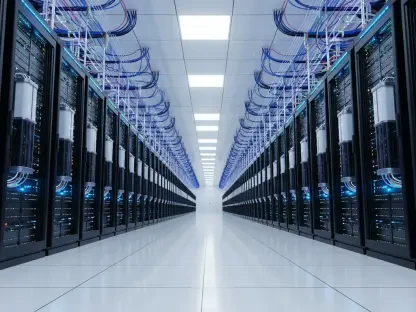Introduction
Welcome to an insightful conversation with Vladislav Zaimov, a seasoned telecommunications specialist with deep expertise in enterprise telecommunications and risk management of vulnerable networks. Today, we dive into the dynamic world of digital infrastructure, focusing on a groundbreaking collaboration in Asia’s booming data center landscape. Vladislav offers his expert perspective on the partnership between a leading technology provider and a prominent digital infrastructure operator for the KR1 Gangnam Data Center in Seoul, Korea. We’ll explore the innovative technologies driving this project, the challenges of managing skyrocketing data traffic, and the broader implications for scalability, reliability, and energy efficiency in the region.
How did this significant partnership for the KR1 Gangnam Data Center come to life?
Thanks for having me, Lisa. This partnership really emerged from a shared vision to address the explosive growth of data traffic in Asia. From what I understand, the collaboration was sparked by the need for robust, high-performance infrastructure in key markets like Seoul. Both parties recognized the opportunity to combine cutting-edge technology with operational expertise to create a data center that could meet the demands of hyperscale and enterprise clients. It’s about aligning strategic goals—delivering top-tier connectivity while ensuring scalability for the future. Conversations likely started around solving specific pain points in digital ecosystems, and it naturally evolved into a full-fledged partnership for the Gangnam project.
What are the main objectives behind this joint effort for the data center in Seoul?
The primary goals revolve around building a world-class facility that can handle the intense data demands of today and tomorrow. This means creating a network that offers exceptional performance for hyperscalers and enterprises in Korea. Beyond that, there’s a strong focus on operational efficiency—ensuring the infrastructure can scale seamlessly as needs grow. Another key objective is reliability; downtime is simply not an option in this space. Finally, I’d say there’s an underlying aim to set a benchmark for digital transformation in the region, showing how advanced technology can redefine connectivity standards.
Can you walk us through the role of advanced routing technology in this data center’s setup?
Absolutely. At the heart of this project are sophisticated routing solutions like the 7250 Interconnect Router, often referred to as IXR. This technology serves as the gateway and core switch for the data center, essentially managing the flow of massive data volumes between internal systems and external networks. It’s designed to handle high-capacity traffic with minimal latency, which is critical for hyperscale operations. By acting as the backbone of connectivity, it ensures that data moves efficiently and securely across the ecosystem, supporting everything from cloud services to enterprise applications.
How does the access system technology contribute to the overall network architecture?
The access system, such as the 7210 Service Access System or SAS, plays a complementary but vital role. It’s typically used as the access switch for the data center’s IT systems, connecting various internal components and ensuring smooth communication at the edge of the network. Think of it as the bridge that links end-user devices or smaller systems to the core infrastructure. Its function is to provide reliable, high-speed access while maintaining security and stability. Without this layer, you’d risk bottlenecks or inefficiencies in how data is accessed and distributed within the facility.
What unique challenges does the surge in data traffic pose for digital infrastructure providers in Asia?
The growth of data traffic in Asia is staggering, driven by everything from cloud adoption to the rise of IoT and 5G. For providers, this means constant pressure to upgrade infrastructure to handle higher volumes without compromising speed or reliability. There’s also the challenge of latency—users expect near-instantaneous responses, which is tough when you’re dealing with massive data flows across diverse geographies. On top of that, operational costs can skyrocket if systems aren’t optimized, and there’s always the risk of network congestion or failures during peak usage. It’s a balancing act of capacity, performance, and cost that keeps providers on their toes.
In what ways does cutting-edge technology help tackle these data traffic challenges?
Advanced technology is a game-changer here. Solutions like high-capacity routers and access systems are built to manage enormous data loads efficiently, reducing latency and preventing congestion. They also bring automation into the mix, which means networks can adapt dynamically to traffic spikes without manual intervention. Scalability is another big win—modern systems are designed to grow with demand, so providers aren’t constantly playing catch-up. Plus, with better monitoring and analytics baked into these technologies, operators can predict and address issues before they impact users. It’s about staying ahead of the curve in a region where data needs are only going to intensify.
Why is energy efficiency becoming such a critical focus for data center operations?
Energy efficiency is no longer just a buzzword—it’s a necessity. Data centers consume massive amounts of power, and with environmental concerns on the rise, there’s huge pressure to reduce carbon footprints. Beyond that, energy costs are a major operational expense, so cutting usage directly impacts the bottom line. For a facility like the one in Gangnam, efficiency also ties into reliability; overheating or power inefficiencies can lead to system failures. Operators are increasingly looking at sustainable practices not just for compliance or PR, but because it’s a smart business strategy in a hyper-competitive market.
How do innovative network solutions support the push for greener data centers?
Modern network solutions are often engineered with energy efficiency in mind. For instance, the hardware used in this project is designed to optimize power consumption without sacrificing performance. Features like intelligent power management allow systems to scale down during low-demand periods, saving energy. Additionally, better cooling integration and reduced hardware redundancy mean less power waste overall. It’s a holistic approach—by streamlining how data is processed and transferred, these technologies lower the energy footprint while still meeting the high standards of a world-class data center.
What improvements can customers expect from this enhanced network infrastructure in Korea?
Customers, especially hyperscalers and enterprises, are in for a real treat. They’ll experience faster, more reliable connectivity, which translates to better performance for their applications and services. Whether it’s cloud computing or real-time data processing, the reduced latency and higher bandwidth will make a noticeable difference. There’s also the peace of mind that comes with enhanced stability—fewer disruptions mean their operations run smoother. Ultimately, it’s about empowering these clients to meet their own user demands with confidence, knowing the underlying network is rock-solid.
Looking ahead, what is your forecast for the future of digital infrastructure in Asia?
I’m incredibly optimistic, but I also see some challenges on the horizon. Asia is poised to remain a hotspot for digital growth, with data centers becoming even more critical as 5G, AI, and edge computing take off. We’ll likely see a push for hyper-localized facilities to reduce latency further, alongside massive investments in scalability and security. Energy efficiency will stay a top priority, with more providers adopting renewable sources and advanced cooling tech. However, the race to keep up with demand could strain resources and supply chains if not managed carefully. My forecast is that partnerships like the one we’ve discussed will become the norm—collaboration between tech innovators and infrastructure providers will drive the next wave of transformation in the region.









